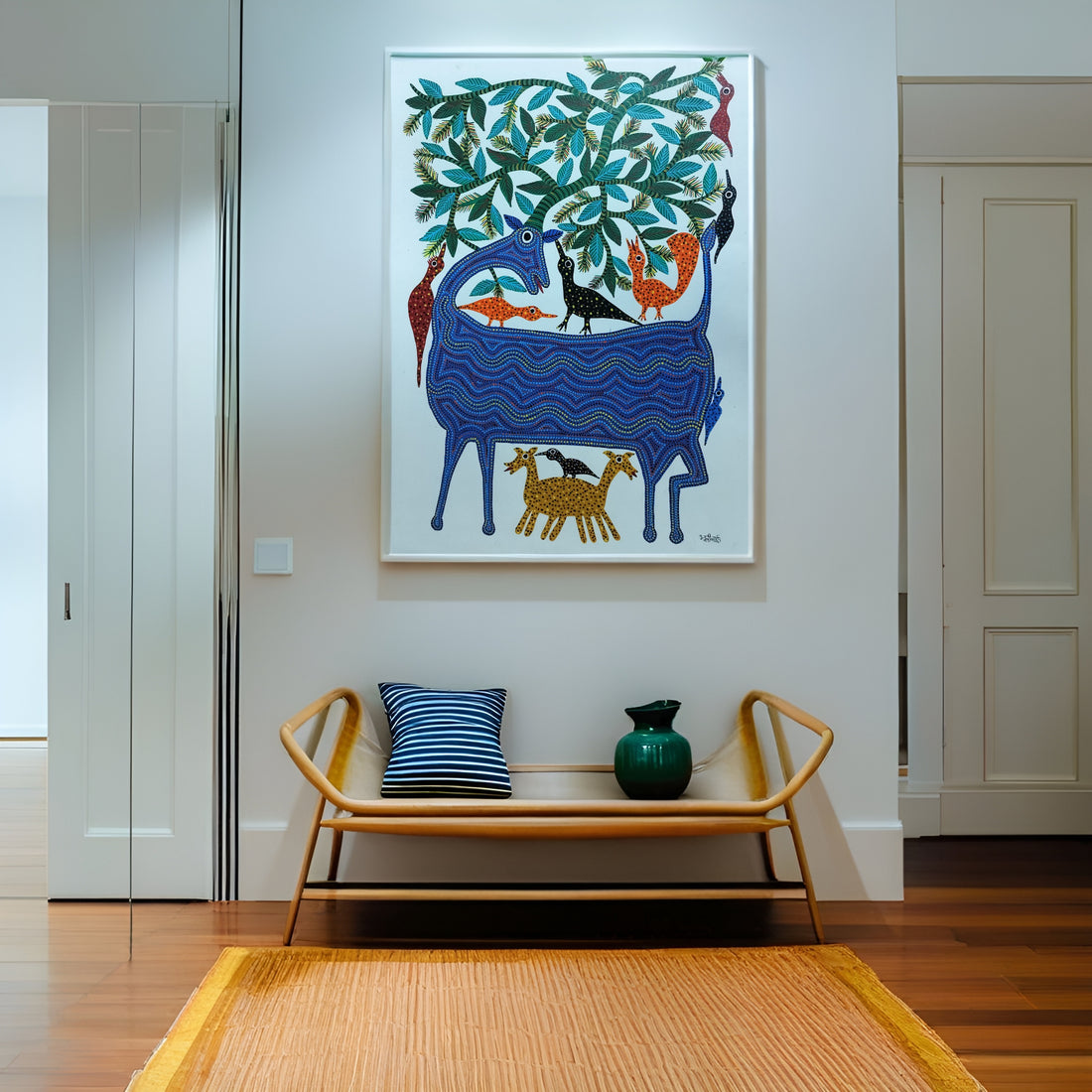Homes are far more than a place of residence. A space transforms around those who occupy it, and it is in homes where this becomes abundantly clear. When picturing an Indian home, some staples have become a part of the collective subconscious. Bright colors, traditional handicrafts, etc once seen as the default are being pushed aside for an increased push towards modernism and uniformity. In this state, we must turn to other means of conveying our individuality and cultural heritage.

Dharatri: The Earth Goddess, Contemporary Warli Art, Maharashtra, Anil Vangad, 39 x 55 inches, Cow Dung and Acrylic on Cloth. Click to Purchase.
It is here where we can find inspiration from cultural practices from all over the subcontinent that do more than just beautify a home, they tell a story. For instance, imagine the clean lines of a modern apartment punctuated by a vibrant Warli painting depicting a bustling harvest scene—something so foreign to the working urban class of India yet undeniably a part of our very DNA. Or perhaps a Madhubani artwork, bursting with intricate floral motifs, graces a minimalist living room breaking the sterile lengths of walls. Far from an aesthetic trend; it's a powerful way to keep history alive within our homes and connect with a past that can seem ever more distant.

Life Of Tree, Traditional Gond Art, Madhya Pradesh, Natural Colors on Acid-Free Paper, 48 x 36 Inches, Venkat Shyam. Explore Venkat Shyam Collection.
India's rich tapestry of tribal art forms, from the Gond's vibrant storytelling narratives to the Warli's earthy depictions of daily life, transcends museum walls and finds a new life in contemporary spaces. Each piece, be it a Santhal Patachitra scroll showcasing local deities or a Bhil artwork portraying hunting scenes, becomes a portal to a distinct cultural heritage. By incorporating these art forms into our homes, we become custodians of stories that predate written history.

Explore Venkat Shyam’s artworks here.
Owning and appreciating these artworks is more than just decoration. It fosters a sense of respect for the craftsmanship and traditions associated with each tribe. The intricate dot work of a Gond painting seen in Lado Bai’s depictions of nature breaks the barrier between the interior world and the great natural exterior.

Similarly in Bhuri Bai’s paintings, we see a template for harmonious living through the interaction of modern technology rendered in the same style and space of the natural world that surrounds it. More importantly, showcasing tribal art in modern settings ensures its continued relevance. It challenges the perception of art as belonging to the elite moderns and brings it to home turf. By integrating these pieces into our homes, we create a vibrant dialogue between the past and present. These artworks become conversation starters, ensuring that the rich cultural heritage and artistic expressions of these communities continue to resonate with future generations.
.png?v=180585433461421961291706102796)


